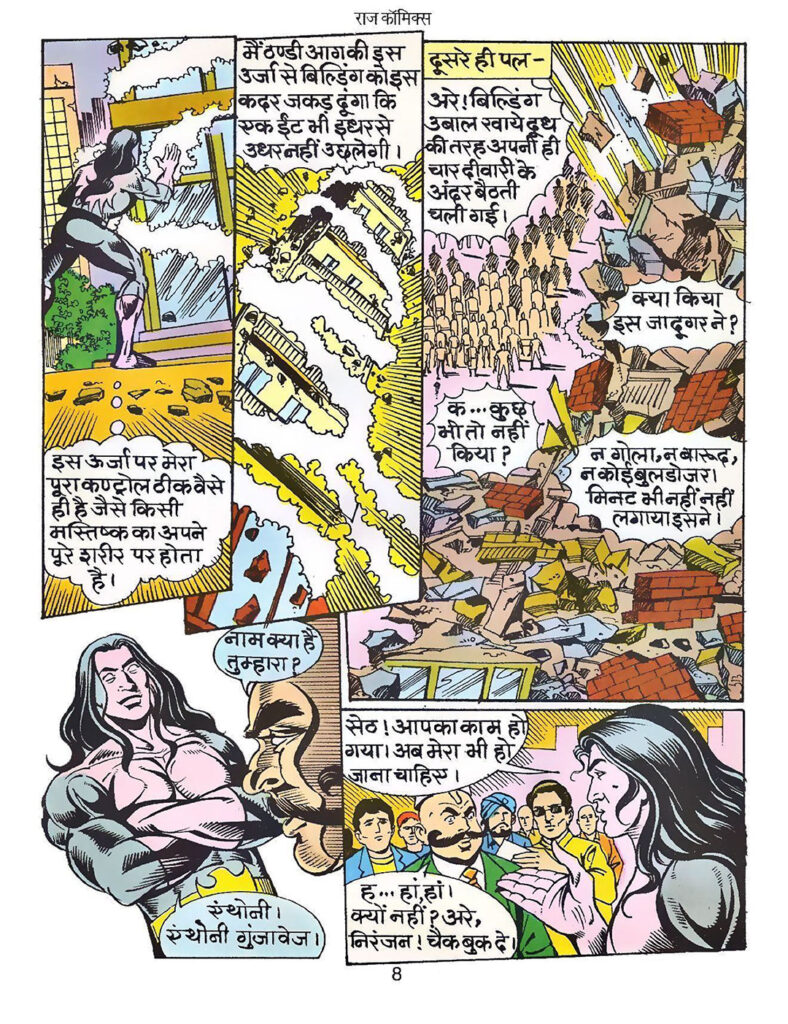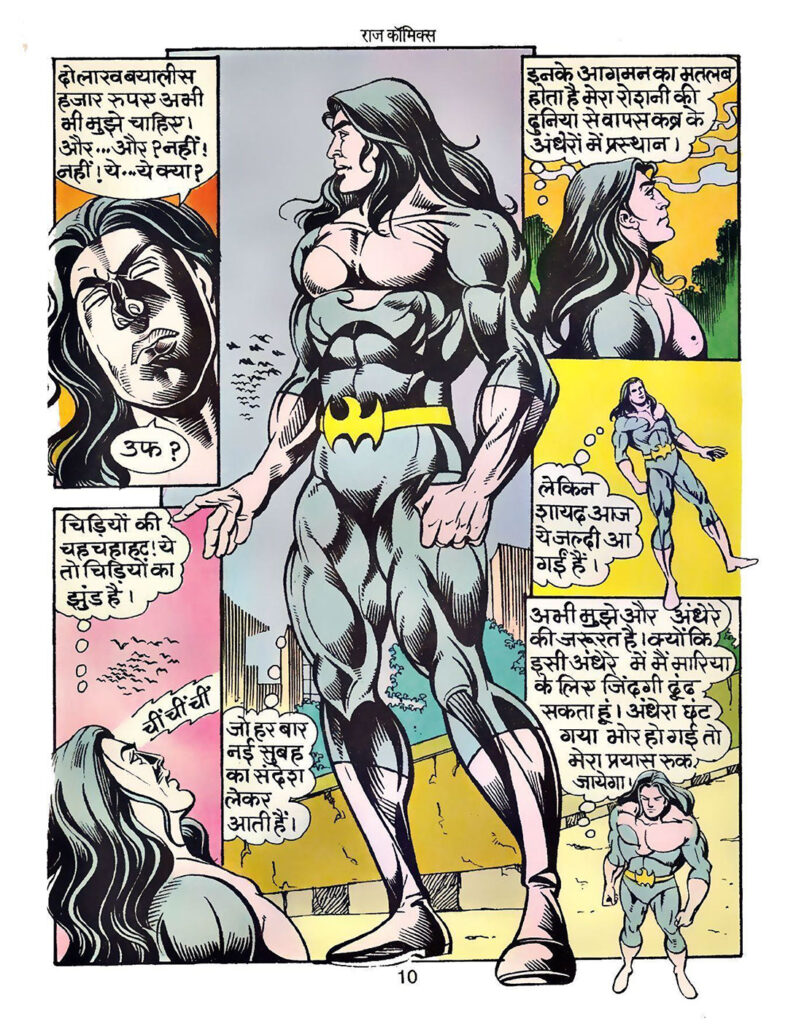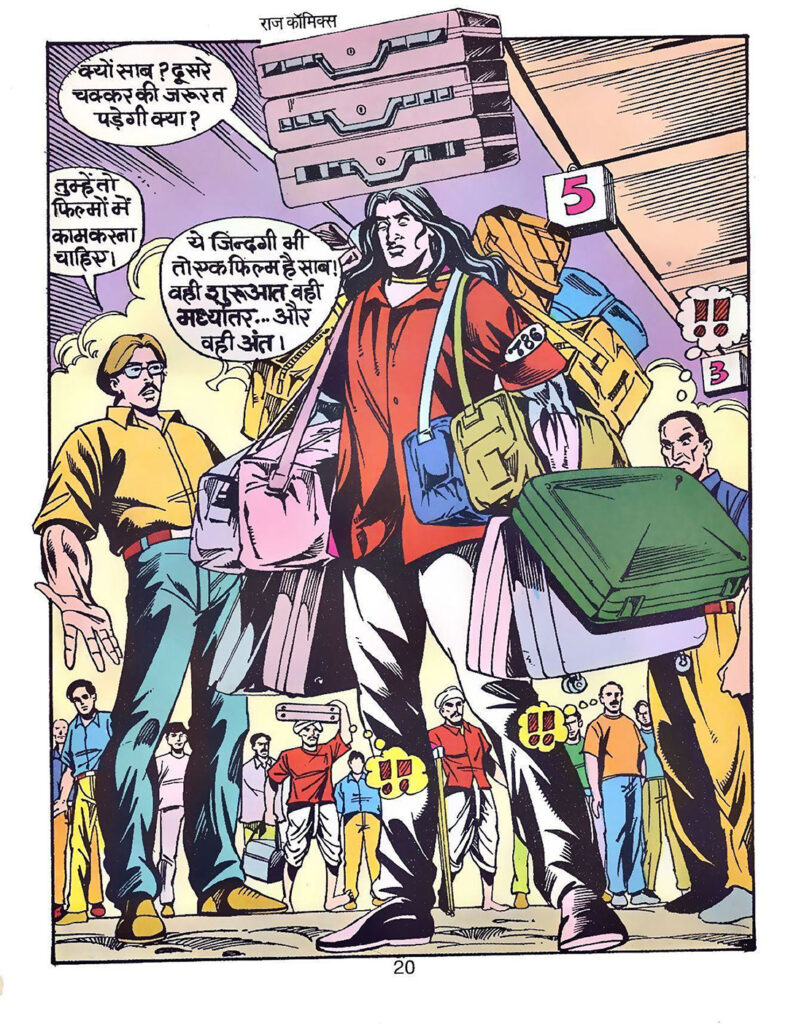“Anthony” is a living corpse that comes out of its grave to retaliate for the injustice done to the earth. The comics “Murda Baap”, written by Tarun Kumar Wahi and illustrated by Tausif, is a heart-touching saga of Anthony’s indelible pain, selfless sacrifice and unshakable fatherhood.
The title of this comics, “Murda Baap”, contains deep contradictions and intense emotions in itself. Anthony is literally a ‘living corpse’, but his deeds belong to a ‘father’ who can go to an extent impossible for his beloved child. This story is not limited to just exciting action or adventures, but it is such an intense journey of human emotions that deeply touches the inner self of the reader.
Analysis of plot and story
The story itself begins with a deep crisis. Anthony’s daughter Maria is seriously injured and Anthony desperately needs money for her operation. A living dead man, who has no worldly wealth, takes to the streets of the city to do any kind of work and work hard to save his daughter. This is where the emotional basis of the story is created, which remains till the end.

Wandering in search of work, Anthony reaches a place where the ‘Dharamshala of Life’, an old, dilapidated orphanage building, is on the verge of collapse. Due to the collapse of this building, not only will hundreds of orphan children become homeless, but the surrounding industrial buildings will also suffer losses worth crores. Considering the seriousness of the situation, the police and administration are looking for a way to demolish it safely, but they have neither time nor advanced technology.
Then a huge iron girder starts breaking off from the building, which could have caused a major disaster. Before anyone in the crowd can understand anything, Anthony uses his supernatural powers to make the girder disappear into thin air. He comes forward and claims that he can demolish this building without any damage. In return he demands a strange amount — two lakh forty-two thousand rupees. Seth Ochhamal, the owner of the adjacent building, immediately agrees to avoid losses worth crores.
Here readers see a unique display of Anthony’s powers. He uses his ‘cold fire’ not as flames, but as a grip of energy. He grips the whole building with this energy in such a way that it collapses and piles itself into its own base, like boiling milk, and not a single brick spills out. It is a wonderful confluence of visual art and imagination.
After receiving the money, the most poignant turn of the story comes. Anthony, who was in need of every rupee for his daughter’s treatment, hands over the entire cheque to give a new roof to the homeless orphan children. This moment establishes Anthony’s ‘father’ character. He is the father not only of Maria, but of every helpless and destitute child.
But his personal struggle is not over yet. He still has to arrange money for Maria. He arrives at the train station to work as a porter. Here he meets an old and bedridden porter, for whom he shows compassion. Soon he gets a work offer from a smuggler, Vikram Seth. In desperate need of money, even though he doesn’t want to, Anthony sets out to do this dangerous job.

The task was to transport goods from a motorboat to a steamer in a stormy sea. Here the author has added another layer to Anthony’s character — his ‘water phobia’, i.e., fear of water. An invincible and powerful dead body’s fear of water makes him more humane and relatable. It is his inner duel, where he faces his greatest fear to save his daughter’s life.
Anthony sets out for the mission blindfolded, overcoming his fears. Soon he realizes that the Coast Guard has surrounded them. Vikram Seth plans to blow up his own boat in an attempt to escape, but Anthony, with his wisdom and strength, not only gets him caught but also helps the police.
The story ends in a happy and satisfying twist. Inspector History tells him that it was all a plan. Vikram Seth was a notorious criminal who had a reward of Rs. 2.5 lakh. The police knew Anthony’s compulsion, so they used him as a pawn in this trap. The reward money is given to Anthony, and he also learns that Maria’s operation has been successfully performed. Finally, Anthony, with his friend Prince (Crow), heaves a sigh of relief.
Characterization
Anthony: Despite being the hero of this comics, he is not a traditional superhero. He is a tragic hero. His powers are extraordinary, but his life is full of pain and loneliness. He is a dead man, but his feelings are deeper than any living person. In “Murda Baap”, his fatherhood is revealed. He is stern, but his heart is full of compassion.
Supporting Characters: Inspector History is portrayed as a clever and understanding police officer, who knows how to do justice within the confines of the law. Characters like Seth Ochhamal and Vikram Seth help move the story forward, but the entire focus of the story remains on Anthony’s struggle.
Art and writing
Tausif’s artwork perfectly captures the mood of the story. The action scenes are dynamic and impressive. The expressions of pain, anger, and helplessness are vividly etched on Anthony’s face. The depiction of the energy form of ‘cold fire’ is particularly convincing. The colors of the comics reflect the classic Raj Comics style of the 90s, which is a pleasant experience for old fans.

Tarun Kumar Wahi’s writing is the life of this comic. The dialogues are brief but impressive. The pace of the story does not slow down anywhere. He has created a great balance of action, emotion, and suspense. Showing such deep feelings for his daughter and a sense of responsibility towards society in the mind of a living dead person shows the maturity of his writing.
Themes and messages
“Anthony” is a living corpse who emerges from his grave to retaliate for the injustice done to the earth. The comics “Murda Baap”, written by Tarun Kumar Wahi and illustrated by Tausif, is a heart-touching saga of Anthony’s indelible pain, selfless sacrifice, and unshakable fatherhood. Its title “Murda Baap” contains deep contradictions and intense emotions in itself. Anthony is literally a ‘living corpse’, but his deeds belong to a ‘father’ who can go to an extent impossible for his beloved child.
This narrative is not limited to just exciting action or adventures, but it is an intense journey of human emotions that deeply touches the inner self of the reader, because it reflects the supernatural definition of fatherhood — that being a father is not just biological, but a selfless responsibility. Also, this story teaches us the true meaning of selfless sacrifice, where true happiness lies in sacrifices made for the welfare of others.
This comics also raises a sharp question: who is really ‘living’ — those who are immersed in selfishness, or a fleshless dead body like Anthony who lives for others? Ultimately, “Murda Baap” conveys the powerful message that despite utter despair, the thread of hope for those who follow the path of truth and justice never breaks.
Conclusion
“Murda Baap” is not just a comics, but a story of emotions, sacrifice, and immense love. This is an excellent example of the golden era of Raj Comics when stories were written not just for entertainment but to create an emotional connection with the readers. This is one of Anthony’s best stories, which proves that to become a hero you do not have to be alive — you have to have humanity alive. This is a must-read story for every comics lover.
